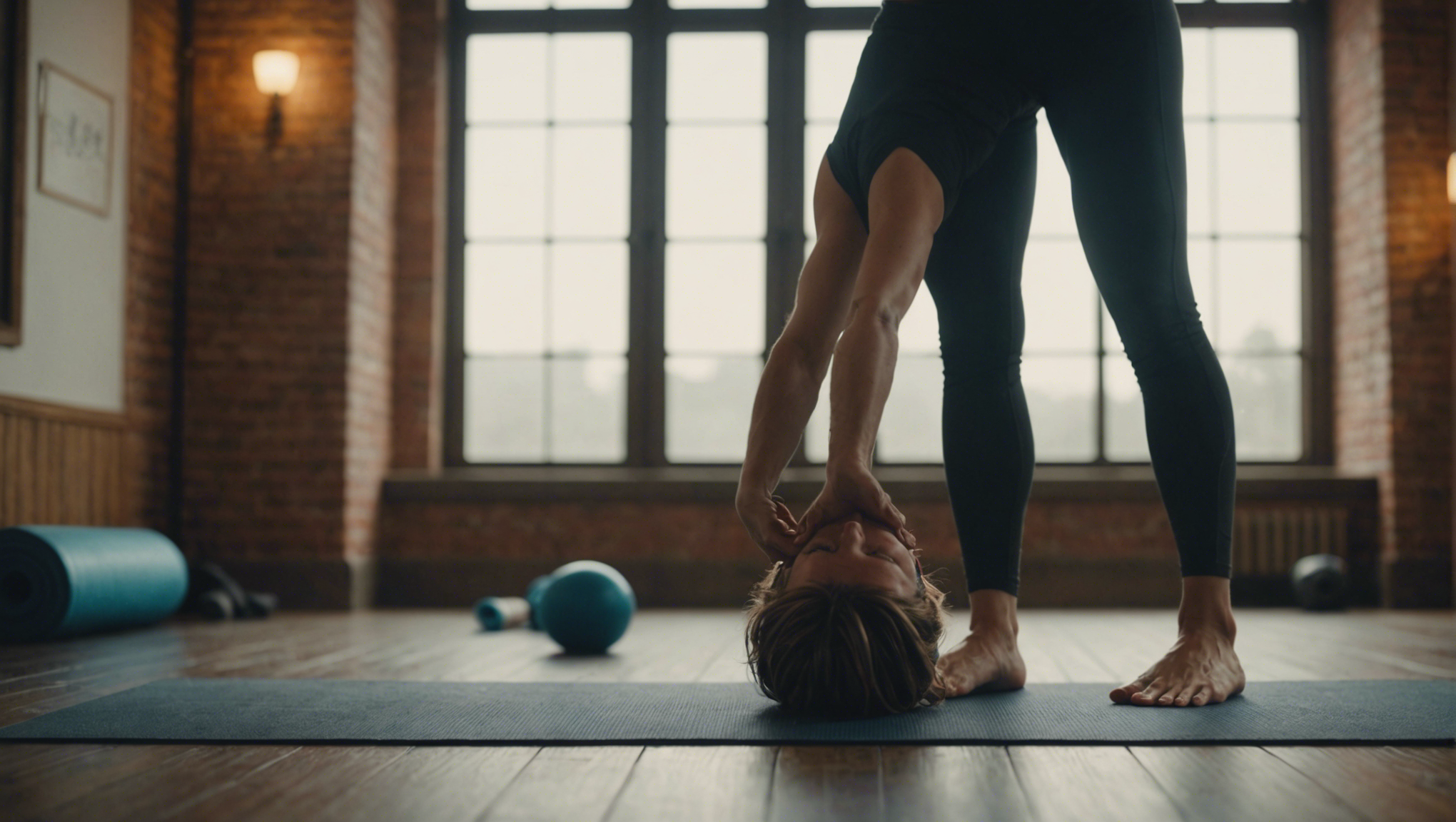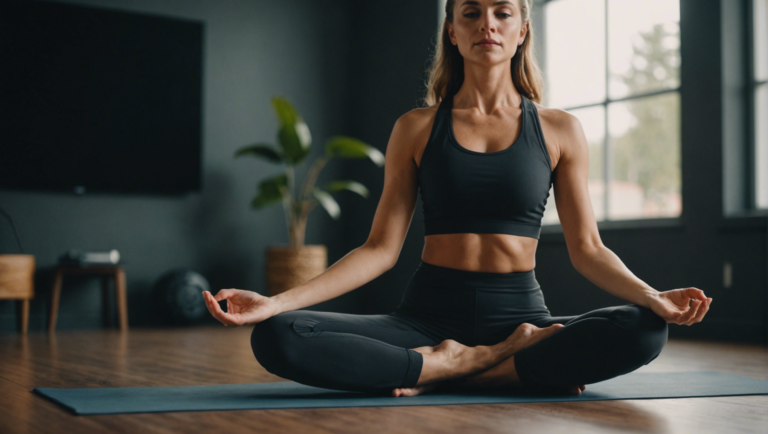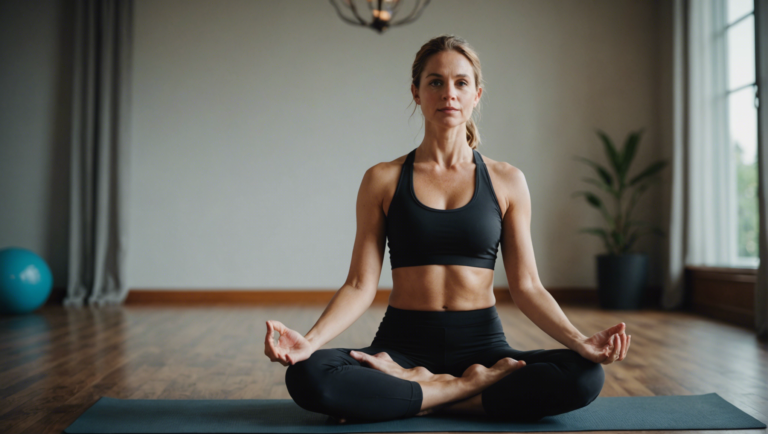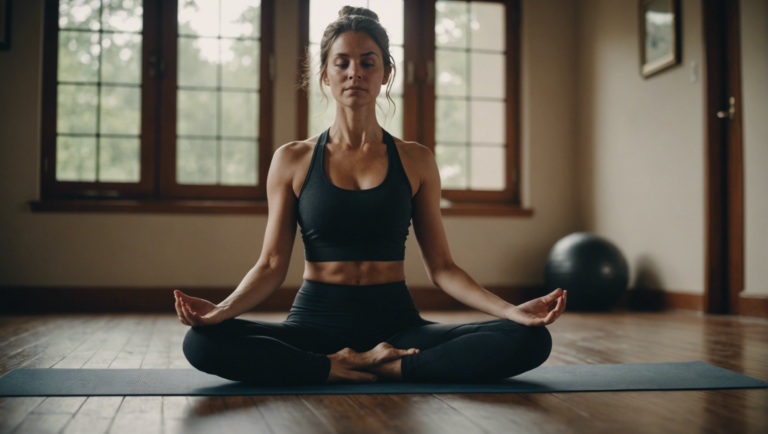Discovering The Best Yoga Styles For Optimal Stretching
Discovering the Best Yoga Styles for Optimal Stretching: A Deep Dive
In the world of yoga, stretching is more than mere physical exercise; it’s a pathway to greater flexibility, improved posture, and enhanced mental clarity. However, with the myriad of yoga styles available, pinpointing the best option for optimal stretching can be a daunting task. This article dives deep into the most effective yoga styles tailored for individuals seeking substantial gains in their flexibility and overall well-being.
Exploring Hatha Yoga for Foundation Building
Hatha yoga stands as the cornerstone for many yoga practices, offering a balanced approach to stretching and strengthening. Characterized by its slow pace and focus on basic postures, Hatha yoga serves as an ideal starting point for beginners. The deliberate, mindful movements encourage deep stretching and awareness of body alignment, providing a solid foundation for flexibility. Practitioners of Hatha yoga report not only physical improvements but also a notable enhancement in stress management and relaxation.
The Dynamic Stretch of Vinyasa Yoga
For those craving a more dynamic stretching experience, Vinyasa yoga offers a fluid practice that intertwines breath with movement. Unlike the static poses of Hatha yoga, Vinyasa is all about the flow—transitioning smoothly from one pose to another. This style effectively promotes flexibility as the body warms up through continuous movement, making it easier to stretch deeper and reduce the risk of injury. Additionally, the variation in sequences from class to class stimulates muscle adaptation, fostering balanced and comprehensive flexibility.
Unlocking Deep Stretches with Yin Yoga
On the opposite spectrum of Vinyasa’s energetic flow, Yin yoga invites practitioners to explore the depths of stretching through passive poses held for extended periods. This meditative approach targets the connective tissues—tendons, fasciae, and ligaments—encouraging a release of tension and promoting increased joint mobility. Ideal for those looking to complement their dynamic practices or seeking profound relaxation, Yin yoga offers a unique opportunity to deepen flexibility while nurturing patience and inner peace.
The Therapeutic Approach of Iyengar Yoga
Precision and alignment are the hallmarks of Iyengar yoga, a style that utilizes various props such as blocks, straps, and bolsters to facilitate deeper stretching without strain. This meticulous attention to detail ensures safe practice, making it accessible to individuals with physical limitations or injuries. By emphasizing correct posture and gradual progression, Iyengar yoga aids in rectifying imbalances and enhancing body awareness, leading to significant strides in flexibility and health.
The challenge of Ashtanga Yoga for Strength and Flexibility
Ashtanga yoga is distinguished by its structured sequence of poses executed in a continuous, vigorous flow. This physically demanding practice not only builds strength but also drastically improves flexibility as the body becomes more adept at moving through the poses. Suitable for those with a solid fitness base, Ashtanga pushes the boundaries of what the body can achieve, fostering resilience, stamina, and, ultimately, an exceptional degree of stretching capability.
Embarking on a journey to discover the best yoga style for optimal stretching requires experimentation and self-reflection. It’s crucial to listen to your body and consider your goals, abilities, and preferences. Whether you’re drawn to the gentle depth of Yin yoga, the balanced foundation of Hatha, or the dynamic challenge of Vinyasa and Ashtanga, each style offers unique benefits that can significantly enhance your flexibility and overall wellness. Remember, the most effective yoga practice for stretching is one that resonates with you personally, encouraging consistency, growth, and a deeper connection to your body. Through regular practice, patience, and mindfulness, the expansive world of yoga holds the power to transform your stretching routine, unlocking new levels of physical and mental freedom.
The Intersection of Flexibility and Strength in Yoga Practice
Yoga has long been celebrated for its capacity to harmonize body, mind, and spirit. At the heart of this ancient practice lies the integration of flexibility and strength, a combination that not only enhances physical health but also promotes mental and emotional resilience. As modern yoga enthusiasts seek to deepen their practice, understanding this intersection becomes crucial for achieving a holistic and balanced approach to health.
Exploring the Fusion of Flexibility and Strength Through Yoga
Yoga is unique in its approach to physical fitness. Unlike traditional exercise routines that tend to emphasize either strength or flexibility, yoga gracefully marries the two, yielding a comprehensive workout that nurtures the entire being. This fusion is evident in the myriad of yoga styles, each of which highlights the symbiotic relationship between muscular power and limberness.
How Yoga Nurtures Flexibility and Strength Simultaneously
At its core, yoga encourages a gradual stretching of the muscles, tendons, and ligaments, leading to increased flexibility. Yet, what sets yoga apart is its inherent focus on muscle engagement. As practitioners flow from one pose to another, they must activate various muscle groups, from the core to the extremities, thus building strength. This dual action not only enhances physical capabilities but also contributes to injury prevention and the overall wellbeing of the practitioner.
The Role of Breath in Yoga’s Dual Cultivation
A key component of yoga that facilitates the balance between strength and flexibility is breath control, or pranayama. Proper breathing techniques are integral to yoga practice, as they help to deepen stretches, support muscular activity, and promote a sense of inner calm. By focusing on the breath, practitioners can achieve a heightened state of awareness and harmony, maximizing the benefits of their practice.
Deepening the Practice: Advanced Yoga Poses for Flexibility and Strength
For those looking to intensify their yoga experience, certain advanced poses offer the opportunity to further explore the intersection of flexibility and strength. Poses such as the Crane (Bakasana), the Warrior series (Virabhadrasana), and the King Pigeon Pose (Raja Kapotasana) demand a high degree of both elements, challenging practitioners to extend their limits while maintaining a strong and stable core.
The Psychological Benefits: Beyond Physical Health
The interplay between flexibility and strength in yoga transcends merely physical benefits, extending into the realms of mental and emotional health. The concentration required to balance these two aspects cultivates mindfulness, reduces stress, and enhances cognitive functioning. Furthermore, the accomplishment of mastering complex poses reinforces self-esteem and fosters a positive body image.
Tailoring Your Yoga Practice to Emphasize Flexibility and Strength
For those eager to cultivate a balanced yoga practice, it’s essential to select a variety of poses and sequences that target both flexibility and strength. a mix of dynamic vinyasa flows with longer-held, static postures can ensure a comprehensive workout. Additionally, practitioners should listen to their bodies, adjusting their practice to address personal areas of tightness or weakness.
Engaging with the Yoga Community for Shared Growth
The yoga community offers a wealth of knowledge and support for those looking to deepen their understanding of the flexibility-strength dynamic. Engaging with experienced instructors and fellow practitioners through workshops, classes, and retreats provides valuable insights and can inspire personal growth within one’s practice.
The essence of yoga lies in its ability to weave together the physical, mental, and spiritual threads of our existence. By exploring the intricate balance between flexibility and strength, practitioners unlock the full potential of yoga, embarking on a transformative journey that transcends the mat and permeates every facet of life.
Tailoring Your Yoga Journey: Finding the Right Style for Your Body
Yoga is not a one-size-fits-all journey. With its ancient roots spreading wide into various disciplines, practices, and philosophies, yoga today offers a kaleidoscope of styles each catering to different needs, bodies, and objectives. Whether you’re stepping onto the mat for the first time or you’re a seasoned practitioner seeking to deepen your practice, tailoring your yoga journey to find the right style for your body is essential for growth, health, and personal fulfillment.
Discovering Your Yoga Match: Listening to Your Body
To embark on a journey that truly resonates with your physical and mental needs, the first step is to listen to your body. Understanding your body’s needs, limitations, and the areas you wish to strengthen or heal is crucial. Some may seek the physical intensity to build strength and endurance, while others might need a gentle, restorative practice to heal and nourish the body and mind. Recognizing your current health, fitness level, and personal goals is the foundation upon which you can build a fulfilling yoga practice.
Exploring Dynamic Practices: Vinyasa and Ashtanga Yoga
For those drawn to a more dynamic and physically challenging practice, Vinyasa and Ashtanga Yoga are ideal paths to explore. Vinyasa, known for its fluid, movement-intensive sequences, is perfect for practitioners seeking to blend breath with motion in a dance-like flow. This style not only enhances physical stamina and flexibility but also promotes mental focus and discipline.
Ashtanga Yoga, on the other hand, is characterized by its structured sequence of poses practiced in the same order. This methodical approach builds immense physical and mental strength, improving concentration, and purifying the body as one progresses through the series.
Embracing Gentle Movements: Hatha and Iyengar Yoga
For those at the beginning of their yoga journey or individuals looking for a slower-paced practice, Hatha Yoga serves as an excellent starting point. Hatha focuses on foundational poses held for longer durations, emphasizing alignment and breath control. This gentle approach allows practitioners to foster a deeper connection with each posture, enhancing mindfulness and body awareness.
Iyengar Yoga, renowned for its precision in alignment and the use of props, offers a comprehensive practice that caters to all levels, including those with specific injuries or limitations. This style fosters a deeper understanding of the body’s mechanics, ensuring a safe and supportive environment for exploring postures.
Seeking Inner Peace: Restorative and Yin Yoga
If your primary goal is to alleviate stress and cultivate a deep sense of inner peace, Restorative and Yin Yoga can be your sanctuary. Restorative Yoga involves a series of simple poses supported by props, allowing the body to completely relax and release tension. This meditative practice encourages a state of passive healing and is a wonderful antidote to the hustle and bustle of modern life.
Yin Yoga, with its focus on holding poses for extended periods, targets the body’s connective tissues, promoting flexibility and enhancing the flow of chi or energy. Its slow pace and introspective nature make it a powerful practice for those looking to dive deeper into the meditative and healing aspects of yoga.
Tailoring Your Practice for Personal Growth
Ultimately, the most enriching yoga journey is one that evolves with you. As your needs, interests, and physical condition change, so too might your preferred style of yoga. The beauty of this ancient practice lies in its diversity and adaptability; there is always a new layer to explore, a different style to try, and deeper insights to uncover about your body and mind.
Engaging with a variety of styles, attending workshops, and learning from different teachers can enrich your practice and offer fresh perspectives. Remember, the right yoga style is the one that meets you where you are, challenges you to grow, and supports your journey towards health, happiness, and self-discovery.
Beyond the Mat: How Yoga Promotes Holistic Health and Wellbeing
Yoga, an ancient practice with roots extending thousands of years back in history, has evolved into a comprehensive approach toward achieving holistic health and wellbeing. Far beyond the constraints of physical exercise, yoga encompasses a rich diversity of styles and practices that cater to the enhancement of mental, emotional, and spiritual health. This article delves into the profound benefits that yoga offers, highlighting its multifaceted contribution to nurturing a balanced and harmonious life.
Yoga: A Path to Physical Wellbeing
Many individuals embark on their yoga journey with a focus on physical fitness. The gentle yet potent stretches and poses (asanas) are instrumental in enhancing flexibility, strength, and balance. Regular practice not only aids in toning the body but also significantly contributes to alleviating chronic conditions such as back pain, arthritis, and hypertension. By promoting the efficient functioning of the respiratory, circulatory, digestive, and hormonal systems, yoga acts as a catalyst for improved overall physical health.
Cultivating Mental Clarity and Emotional Balance
Yoga transcends the physical realm, offering profound benefits for mental health. Techniques such as mindful breathing (pranayama) and meditation are central to yoga practice, helping to cultivate a state of mental clarity and calmness. Amidst the frenetic pace of modern life, these practices offer a sanctuary of peace, significantly reducing stress and anxiety levels. Furthermore, yoga encourages the development of mindfulness, enhancing emotional regulation, and fostering a heightened sense of self-awareness and empathy.
Spiritual Growth and Self-Realization
At its core, yoga is a spiritual journey toward self-realization. This aspect might not appeal to everyone; however, for those who delve deeper, yoga offers rich, spiritual teachings that inspire a connection with the inner self and the universal consciousness. Asanas, meditation, and chanting can be tools for transcending the ego, leading to profound insights and a sense of oneness with the world. This spiritual exploration fosters a deep-seated sense of peace and contentment, contributing to enhanced life satisfaction and wellbeing.
Nurturing Connections and Community
Yoga also plays a pivotal role in building a sense of community and belonging. Whether it’s through group classes, workshops, or retreats, practicing yoga with others creates a shared experience of growth and learning. These communal aspects of yoga not only enhance motivation but also foster connections with like-minded individuals. The support network found within yoga communities can be incredibly powerful, offering encouragement and understanding through life’s ups and downs.
Practical Tips for Integrating Yoga Into Your Lifestyle
Adopting yoga into daily life doesn’t necessitate drastic changes. Starting with just a few minutes each day can make a significant difference. For beginners, it’s helpful to explore various yoga styles and find one that resonates with personal preferences and goals. Additionally, incorporating yoga principles such as non-harm (ahimsa), truthfulness (satya), and contentment (santosha) into everyday life can enrich the practice and extend its benefits beyond the mat.
Yoga as a regular practice promises a journey of discovery that extends well beyond physical exercise. By embracing yoga in its entirety, individuals can enjoy a comprehensive range of benefits that encompass physical, mental, emotional, and spiritual wellbeing. Through consistent practice, yoga paves the way for a balanced and harmonious life, anchoring an awareness that transcends the mundane, fostering a deep connection with the essence of being. In this holistic approach, yoga emerges not only as a practice but as a way of life, offering profound insights into the art of living well.
Innovations in Yoga: Blending Traditional Practices with Modern Needs
Yoga has been a healing practice for thousands of years, offering physical and mental benefits to its practitioners. However, as the pace of modern life accelerates and technological advancements continue to shape our daily lives, yoga too has evolved. This transformation has led to a fascinating blend of traditional practices with modern needs, resulting in innovative approaches to yoga that cater to contemporary lifestyles while maintaining the essence of its ancient wisdom.
Merging Technology with Yoga
The digital age has profoundly impacted how we engage with yoga, from apps that offer guided sessions to online platforms streaming live classes. This technological infusion makes yoga more accessible, allowing practitioners to maintain their routines regardless of their location or schedule. Additionally, wearable tech now enables yogis to monitor their physical responses in real time, from heart rate to flexibility, providing a personalized yoga experience that traditional practices could never offer.
Yoga for Modern Stresses
Today’s yoga studios and online platforms are addressing modern ailments such as digital eye strain, tech neck, and chronic stress from information overload. Tailored yoga sequences focus on reversing or mitigating the physical strain of prolonged computer and smartphone use, blending traditional asanas with stretches and poses that specifically target these contemporary conditions. This adaptation not only demonstrates yoga’s flexibility in meeting modern needs but also its effectiveness in addressing problems unheard of in ancient times.
Eco-Conscious Yoga Practices
Sustainability has become a pressing concern, and the yoga community has responded by integrating eco-consciousness into practices. From eco-friendly yoga mats made of natural materials to studios advocating for zero-waste lifestyles, the yoga world is actively contributing to environmental preservation. This shift not only aligns with the ethical principles of yoga but also resonates with a growing population concerned about their ecological footprint.
Scientific Insights
Modern yoga practices are increasingly informed by scientific research, incorporating insights from anatomy, physiology, and psychology to enhance their effectiveness. This evidence-based approach ensures that yoga remains beneficial, safe, and relevant. By understanding the underlying mechanisms of yoga’s impact on the body and mind, instructors can optimize their teaching methods to help practitioners achieve their health and wellness goals more efficiently.
Expanding the Scope of Yoga
Innovation in yoga is not limited to adapting practices; it also includes expanding the scope of who can benefit from yoga. Adaptive yoga makes the ancient practice accessible to individuals with disabilities or chronic conditions. Meanwhile, the rise of specialty yoga, such as aerial yoga, acro-yoga, and paddleboard yoga, offers unique experiences that combine the traditional benefits of yoga with new challenges and perspectives.
Bridging Cultural and Traditional Gaps
The global yoga community is more connected than ever, allowing for a rich exchange of cultural traditions and practices. This has led to a more inclusive and diverse yoga practice that honors its origins while embracing new interpretations and styles. By respecting the roots of yoga and encouraging innovation, the yoga community ensures that the practice remains relevant and meaningful across different cultures and generations.
The Role of Community in Modern Yoga
The concept of sangha, or community, has always been central to yoga practice. Today, through social media and online forums, yogis around the world share their experiences, insights, and innovations, further enriching the practice. This global community supports each other in exploring yoga’s potential to enhance modern life, whether through managing stress, improving physical health, or fostering spiritual growth.
In blending traditional yoga practices with the demands of modern life, these innovations offer a more personalized, accessible, and relevant yoga experience. They highlight yoga’s enduring adaptability and its ability to serve as a bridge between the ancient and the contemporary. As we continue to navigate the complexities of modern existence, yoga remains a steadfast companion, constantly evolving to meet our changing needs.
Conclusion
Embarking on a journey through the multifaceted world of yoga unveils a rich tapestry of styles, each with its unique focus, techniques, and benefits. As we dive deep into the essence of yoga for optimal stretching, it becomes clear that this ancient practice offers much more than just flexibility and strength; it is a gateway to a balanced and harmonious existence, melding physical prowess with mental resilience and emotional tranquility.
The exploration begins with a profound understanding of the various yoga styles that prioritize stretching, an essential component for not only athletes and dancers but anyone looking to enhance their physical health and reduce the risk of injuries. From the slow-paced and deeply meditative holds of Hatha and Yin Yoga, which allow muscles to gently lengthen and release tension, to the more dynamic sequences of Vinyasa and Ashtanga, which pair breath with movement to create a flow that heats the body from within, promoting deeper stretches and increased flexibility. Each style serves as a testament to yoga’s adaptive nature, catering to the ever-evolving needs and preferences of practitioners around the globe.
As we delve further into the intersection of flexibility and strength in yoga practice, it becomes evident that these two elements are inextricably linked, each one fueling and facilitating the other. The gradual building of strength through yoga poses or "asanas" enables the body to hold stretches for longer, reducing the muscle’s resistance to lengthening over time. Meanwhile, increased flexibility enhances the range of motion, allowing for more profound and effective strengthening exercises. This symbiotic relationship underscores the holistic approach of yoga, which seeks not just to improve physical health but to nourish the mind and soul as well.
Tailoring one’s yoga journey to align with individual physical needs and goals is another critical aspect of maximizing the benefits of the practice. The realization that there is no "one-size-fits-all" approach to yoga encourages practitioners to listen to their bodies and choose a style—or a combination of styles—that best suits their level of flexibility, strength, and overall health objectives. This personalized approach ensures that yoga remains a lifelong companion, continuously adapting to and evolving with the practitioner’s changing needs.
The discussion then transcends the physical realm to explore how yoga promotes holistic health and wellbeing. Beyond the stretches and poses lies a profound practice steeped in mindfulness and introspection. Yoga’s emphasis on breath control, or "pranayama," alongside meditation, instills a sense of inner peace, reducing stress and enhancing mental clarity. This comprehensive approach to health caters not only to the body but to the emotional and psychological aspects of well-being, making yoga a powerful tool for fostering resilience in the face of life’s challenges.
The article touches on the innovative ways in which yoga continues to evolve, blending traditional practices with modern needs. In an era marked by rapid technological advancements and a fast-paced lifestyle, yoga emerges as a grounding force, a sanctuary for those seeking refuge from the chaos. Through hybrids such as Power Yoga, Aqua Yoga, and even Digital Yoga platforms, the practice becomes more accessible, inviting a broader audience to experience its transformative power.
The journey through the vibrant landscape of yoga for optimal stretching underscores the practice’s unparalleled versatility and adaptive nature. As individuals navigate through the myriad styles, they uncover a holistic path to health, one that harmonizes body, mind, and spirit. This journey is not just about achieving the perfect stretch or striking the most challenging pose; it is about cultivating a deep sense of self-awareness and embracing a lifestyle that fosters comprehensive well-being. In the embrace of yoga, each person finds not only a means to enhance physical flexibility and strength but a guide to a more mindful, healthy, and balanced life.



